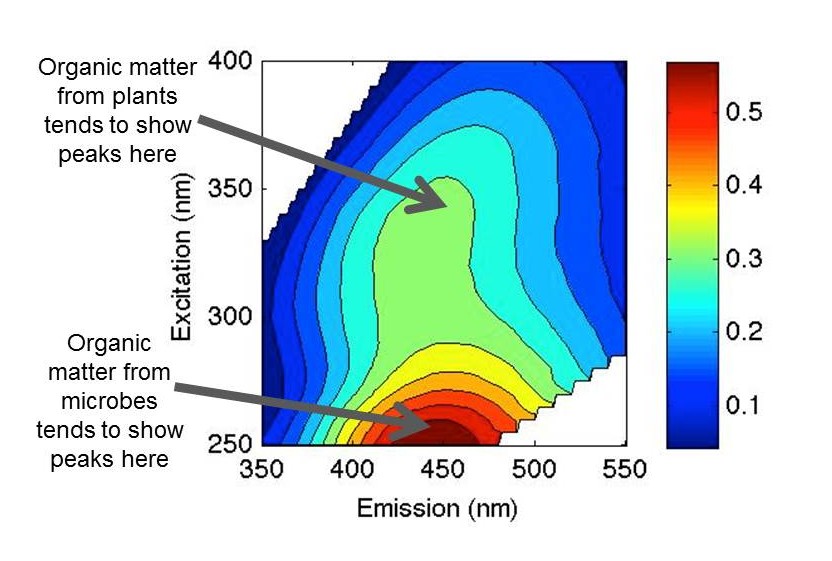Once we get your sample, we will analyze it for both the amount (or concentration) and type of organic matter present. To do this, we use spectrophotometry – a type of analysis that uses light to find out how much and what kind of organic matter is present within your sample.
To determine the concentration of organic matter in your sample, we first filter it to make sure we are looking at only the organic matter that is dissolved (not the sediment or dirt).
Next, we use absorbance spectrophotometry to find the concentration (amount) of organic matter. Sounds fancy, but this simply means passing light through the sample, and looking at how much light is absorbed by organic matter within the sample. The more light is absorbed at specific wavelengths, the higher the amount of organic matter in the sample.
We then use fluorescence spectrophotometry to look at what kinds of organic matter are present. Like absorbance, this technique passes light through the sample. Certain types of organic matter will take this light, and re-emit it at lower energies (just like fluorescent lights emit light after you give them electricity by flicking a light switch). By looking at the fluorescence of organic matter over a large range of wavelengths, we can begin to see patterns that correspond to specific types of organic matter. This can tell us where the organic matter came from, such as from plant material within the soil, or from microbes within water.
This is our fluorescence instrument:

Photo credit: Ashlee Jollymore
This is what we see when we analyze a water sample for fluorescence:
 Both how much and what type of organic matter present within water can be affected by human impacts upstream of where the sample was taken. By comparing between different sites, we hope to see how impacted different sites are, what this could mean in terms of ecosystem function and human health, and if we want to use the water for things like swimming and drinking.
Both how much and what type of organic matter present within water can be affected by human impacts upstream of where the sample was taken. By comparing between different sites, we hope to see how impacted different sites are, what this could mean in terms of ecosystem function and human health, and if we want to use the water for things like swimming and drinking.

 Follow
Follow